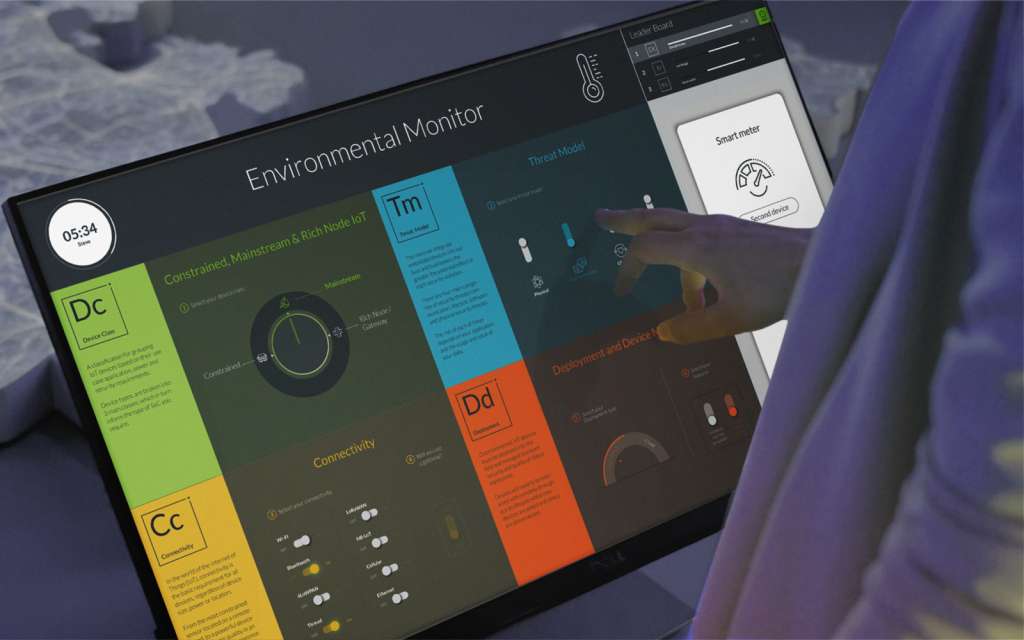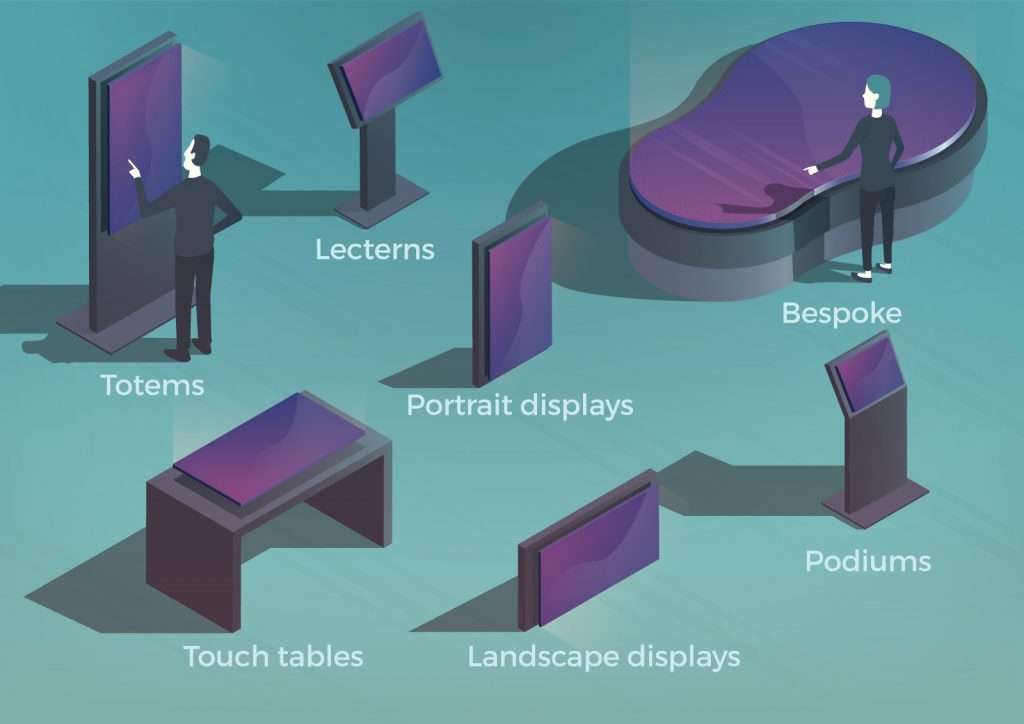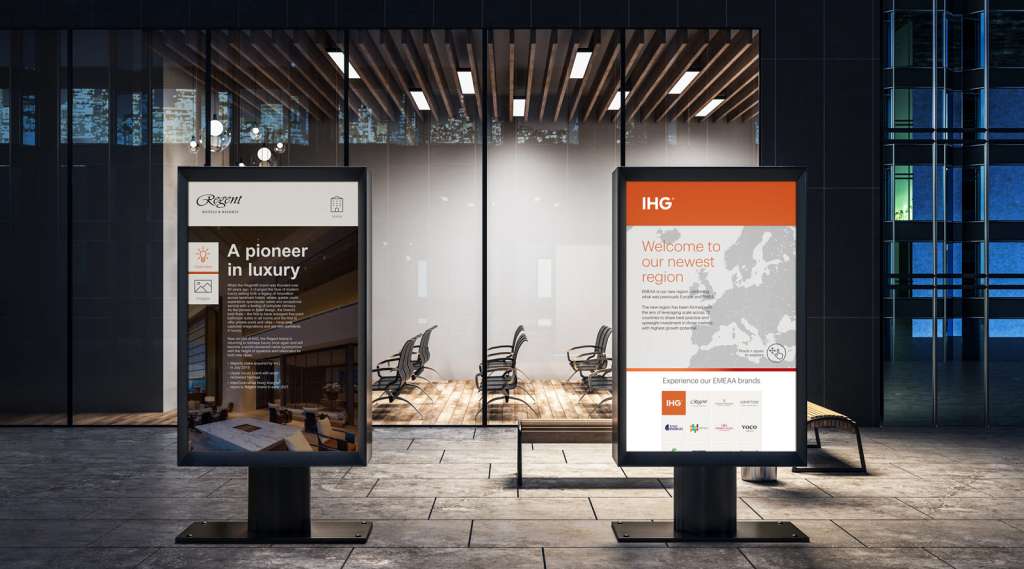Wondering how you should go about creating an immersive touchscreen experience for your business?
If you’re anything like many of our clients who first come to us, you may have a lot of questions in your head, such as:
- How do I know I definitely need a touchscreen?
- Is it simply nice to have or will it help me generate business?
- How will I be able to demonstrate ROI?
- What are the benefits of interactives to me and our customers?
- What sort of things can I put on a touchscreen?
- Can’t I just stick my website on one and let people use that?
- What are the costs – is it going to be expensive?
- How easy are they to use and maintain – can I update it?
And so many more! It can be a bit overwhelming, however, we can assure you that touchscreen experiences are definitely worth investing in as long as you go about it in the right way.
As a starting point, we thought we’d put together this blog to give you a better idea of where to begin when thinking of creating an interactive touchscreen experience.
Think carefully about your audience and goals
In the very early stages of developing a touchscreen experience, the first thing you need to do is consider why you need it in the first place. If you’re a business, what are your objectives? Perhaps you want to inform, educate, raise awareness of your brand or win new business and capture leads.
It’s also important to think about the people who will be using your touchscreen experience. Who are they? How do they like to interact with technology? What will pique their interest? What information are they after?

There are two main parts to an interactive touchscreen experience
A touchscreen is made up of two parts; the visual experience (the content, images and video etc. that you interact with) and the hardware (the screen itself).
Think of it like looking at a website – the website itself is the visual experience and you need hardware (like a PC or Mac) to view it.

As you may have guessed, the visual experience is the most important part as it needs to keep your audience engaged, and help them find the information they want in a fun, informative and visually enticing way.
If they find the experience difficult to use or can’t find what they want, then they‘ll walk away.
The visual experience
As mentioned above, you’ll want to think about your business objectives and how these can be achieved through the experience, and equally important is the experience that you want your customers to have.

At the very least you’ll want to leave them with a positive and memorable experience; but what sort of things do you need to consider?
- Will you need to update the content of your experience regularly?
- What impression do you want to leave your customers with?
- Will your experience be a permanent fixture, or only for a short event?
- What sort of things would you like to see on your touchscreen, video, 3d models, links to web pages and other interactive content?
- Does it need to interact with other things on the internet, or other software such as an online demo or data on a company server?
- Are you looking to capture user information, such as contact details or analytics?
These are just some of the questions you’ll need to think about. You’ll then have to design an experience to achieve your goals, and in order to do this you’ll need to consider the experience and how your visitors will interact with your experience.
Here are a few things you should really consider when looking at the visual experience:
- Design for different levels of engagement – you have to take into consideration that people have different attention spans. Some may want to spend time engaging with your experience and exploring, while others may just want to get quick bits of information
- Be concise – People are busy, and at exhibitions they have a lot to do, so be concise with your messaging; get to the point and don’t over complicate your content
- Don’t worry too much about the technology – With a good experience, people won’t notice the technology behind it, so don’t get hung up on this; it’s the experience that matters. Leave the technology to your developer
- Ease of use – Your experience has to be easy to use, and obvious as to what the user has to do. Minimal design is great but people really need a little extra help with large touchscreens, so include navigational text. Navigation should be large and obvious with clear back navigation.
- Seamless design – Ugly design will put customers off, and also makes content hard to digest. A well-designed experience is pleasing on the eye, and draws people in; it engages and helps them to explore and stay longer
- Make it surprising – The brain gets easily bored and starts to wander, so it’s important that it is kept attentive. By including enough interest and surprise, even if subtle such as simple animations, it helps to keep people engaged
- Clean and simple – Don’t make people think too hard, or give them too many choices; clutter on the screen is confusing and will put people off
- Big obvious buttons – The bigger the screen, the bigger the buttons and content need to be. If the buttons are small on a big screen, people don’t notice them and content becomes lost and confusing
- It’s not a workout – If you’re using a really big touchscreen like 65” and larger, try not to put touchpoints all over the place, otherwise, people are going to have to reach to touch them and they won’t do it after a couple of goes.

This may sound like a lot to take in, but we can’t emphasise enough how important these elements are. So often, we see touchscreens that aren’t being used because of the experience, and this is a waste of your time and money invested in developing the experience in the first place.
If you’re going to use a touchscreen agency to help develop the experience, then they will take all these considerations into account for you – we’ll talk about this later in the blog.

Choosing your hardware
Once you have a better idea of the type of experience you want to create for your visitors, it’s then time to start looking at hardware options.
These might include:
- Tables
- Kiosks
- Lectern style
- Giant iTab
- Outdoor
- Videowalls
- iPads

You should also think about the space your touchscreen will be going into, and what will be around it – as well as any other branding that will be there. You might also need to make it obvious that people can go up and use your touchscreen.
Ideally, you should think about the touchscreen as being part of the stand or space it is going into. You may want your touchscreen to be branded – or if it is lectern-style (i.e. has a stand), you might want branding on the side so it’s not too plain.
You may also need to think about the messaging around your touchscreen. Sometimes it might not be obvious it’s a touchscreen, and sometimes people can be a little cautious or self-conscious about using screens, so some messaging to encourage them can help.
Having an inviting message on the touchscreen encouraging people to come and explore is really important, and something that most of our first-time clients don’t think of.
Finding the right developer
Although it’s possible to create your own touchscreen experience, we would really advise you to look at working with a specialist developer. Ideally, someone (or a team of someones) who will listen to your challenges, needs and ideas, and give you some guidance on what’s possible.
It’s important that they have the right experience of developing interactive experiences – rather than simply specialising in the hardware side of things.
They should be able to show you some examples of their previous work, and client testimonials. And you don’t have to settle for the first person you speak to, either – we’d advise talking to 2 or 3 different agencies and seeing what they come up with.
Remember, they should be asking you some of the questions we mentioned above, such as working out your business objectives, what kind of experience you want your customers and visitors to have and many more.

Download our guide
We hope we’ve managed to give you a better idea of where to start when creating an interactive touchscreen experience for your business. It can be daunting when it’s your first time looking to introduce an interactive – regardless of what you’ll be using it for.
Remember, we always recommend seeking out a touchscreen specialist, or agency who specialise in developing them like POP – rather than a hardware provider – so you can create truly memorable and engaging experiences.
Would you like to know more about creating a touchscreen experience your customers will love? Get in touch on +44 (0)117 329 1712, email hello@popcomms.com or download our guide!

Related Posts

How You Can Measure the Success of an Interactive Touchscreen Experience
Read

Case Study: How POP Can Develop an Interactive Touchscreen Experience That You Can Adapt and Modify for Future Use
Read

Why You Need A Bespoke Interactive Sales Enablement Tool for the Best Customer Experience
Read

Advanced Manufacturing Interactive Sales Experiences that WOW!
Read